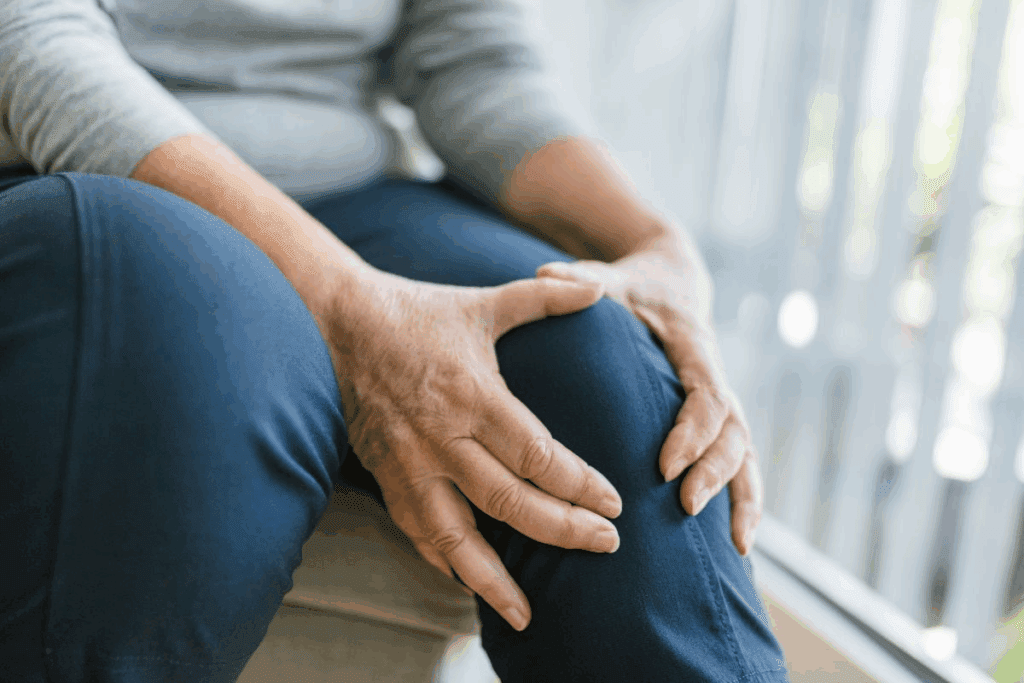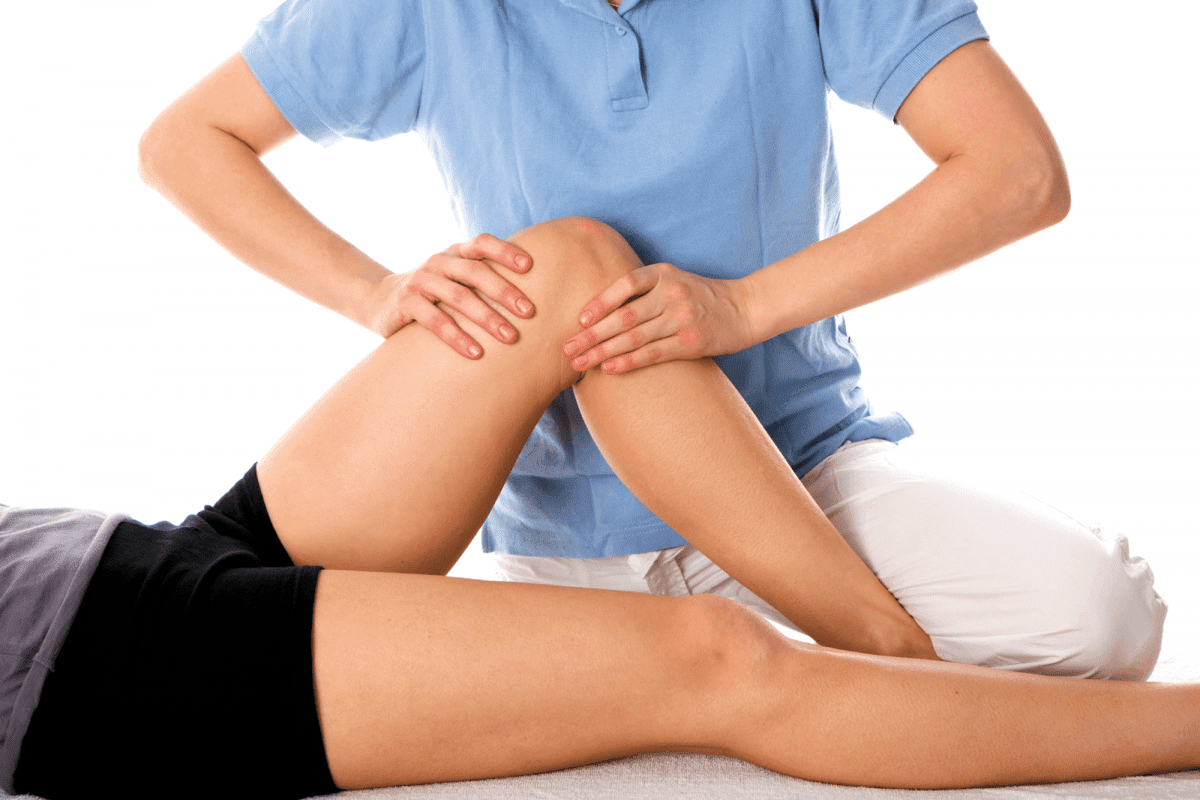Last Updated on November 27, 2025 by Bilal Hasdemir

Osteoarthritis affects millions, leading to significant joint pain and stiffness. Understanding osteoarthritis flare-up triggers is essential, as a sudden increase in symptoms can be debilitating, impacting daily life and overall well-being.
Many factors can lead to these flare-ups. Overexertion, injury, and changes in weather or weight are common causes. Knowing what triggers them is key to managing the condition effectively.
Key Takeaways
- Identifying triggers can help manage osteoarthritis symptoms.
- Overdoing an activity can lead to increased pain.
- Weather changes and weight fluctuations are common causes.
- Recognizing these factors is key to developing a management plan.
- Effective management can significantly improve quality of life.
Understanding Osteoarthritis and Flare-ups

Osteoarthritis affects millions, leading to significant joint pain and stiffness.
What is Osteoarthritis?
Osteoarthritis occurs when cartilage in joints wears out. This makes bones rub together, leading to joint pain, stiffness, and less mobility. It often hits hands, knees, hips, and the spine.
Defining Flare-ups in Osteoarthritis
Flare-ups in osteoarthritis mean symptoms get worse. This leads to more joint pain and stiffness. Many things can trigger these episodes, like too much activity, injuries, or changes in the environment.
How Flare-ups Affect Daily Life
Flare-ups make everyday tasks hard. Knowing what triggers them and how to avoid them is key to a better life.
| Aspect | Description | Impact |
| Osteoarthritis | Degenerative joint disease | Pain, stiffness, limited mobility |
| Flare-ups | Episodes of worsened symptoms | Increased pain, reduced function |
| Lifestyle Triggers | Overexertion, injuries, environmental changes | Trigger flare-ups |
The Arthritis Foundation says managing osteoarthritis needs a full plan. This includes lifestyle changes, medicine, and sometimes surgery. Knowing and dealing with flare-up triggers is a big part of this plan.
Osteoarthritis Flare-up Triggers: An Overview
Osteoarthritis flare-ups can be caused by different things for each person. Knowing what triggers them is key to managing the condition well.
Categories of Common Triggers
Common triggers include physical overexertion, injuries, weather changes, and stress. These can be broken down into physical, environmental, and psychological factors.
- Physical Triggers: Too much activity or repetitive movements can hurt joints, causing flare-ups.
- Environmental Triggers: Weather, like cold or humidity changes, can make joint pain worse.
- Psychological Triggers: Stress and other mental factors can make joint pain worse and lead to flare-ups.
Individual Variation in Trigger Responses
People react differently to these triggers. What might cause a flare-up for one person might not affect another. This highlights the importance of tracking personal triggers.
Tracking Your Personal Triggers
Tracking personal triggers means watching your daily activities, the environment, and your mental state. This helps find patterns before flare-ups happen. Understanding your triggers allows you to take proactive steps in managing your condition.
- Keep a daily journal of what you do, the weather, and how stressed you are.
- Look for patterns between these factors and when flare-ups occur.
- Change your daily habits and activities based on what you find to reduce flare-ups.
Physical Activity and Joint Overuse
Staying active is key, but those with osteoarthritis need to watch their joints. Physical activity helps keep joints moving and muscles strong. But too much can cause flare-ups.
Joint Overuse and Repetitive Movements
Repeating the same movements can wear down joints, making osteoarthritis worse. Jobs or sports that require a lot of the same movement can be harmful. It’s important to mix up your activities and rest often.
High-Impact Activities and Their Effects
High-impact activities like running can stress joints, leading to flare-ups. Swimming or cycling are better for your joints. A study said, “Exercise is good, but choose the right kind and intensity to avoid pain.”
“The key to managing osteoarthritis through physical activity is finding a balance between exercise and rest.”
Joint Health Expert
Finding the Balance Between Activity and Rest
Finding the right balance is essential. Listen to your body and pace yourself.
Knowing what activities trigger symptoms helps you plan better. This way, you can stay active without causing more pain.
Injury and Trauma to Joints
Osteoarthritis flare-ups can start from injuries that harm the joints right away. It’s important to know how injuries impact osteoarthritis to manage it well.
How Injuries Trigger Flare-ups
Injuries can hurt the joint structures, causing inflammation and pain. This damage speeds up the wear and tear on the joints. It makes osteoarthritis symptoms worse.
Post-Traumatic Osteoarthritis
This underscores the importance of joint care following trauma.
Protecting Vulnerable Joints
Keeping joints safe from more injuries is vital for managing osteoarthritis. Ways to do this include wearing protective gear, staying at a healthy weight, and doing exercises that strengthen the muscles around the joints.
Weather-Related Osteoarthritis Triggers
For those with osteoarthritis, weather changes can trigger flare-ups. Knowing how weather affects symptoms helps manage the condition better.
Cold Weather and Joint Pain
Cold weather often makes osteoarthritis symptoms worse. Joints get stiffer and more painful. This occurs as synovial fluid thickens, reducing its ability to lubricate the joints. Dressing warmly and staying active can help manage symptoms in cold weather.
Humidity and Barometric Pressure Changes
Changes in humidity and barometric pressure also impact osteoarthritis symptoms. High humidity makes joints ache, while barometric pressure changes cause joints to expand and hurt. Monitoring weather forecasts helps prepare for flare-ups.
Seasonal Strategies for Joint Protection
Adjusting daily routines based on the weather can help. For example, staying indoors in extreme weather, using heating pads in cold, and keeping a healthy weight reduce joint strain.
| Weather Condition | Impact on Osteoarthritis | Management Strategy |
| Cold Weather | Osteoarthritis affects millions, leading to significant joint pain and stiffness. | Dress warmly, stay active |
| High Humidity | Makes joints feel achy | Stay hydrated, use air conditioning |
| Barometric Pressure Changes | Causes joints to expand and become painful | Monitor weather forecasts, adjust activities |
Weight Management and Joint Health
For those with osteoarthritis, keeping a healthy weight is very important. Too much weight can make joint pain worse, mainly in hips, knees, and spine.
Impact of Extra Weight on Joints
Extra weight means more pressure on joints. This can wear down cartilage faster, making symptoms worse. Losing weight can help ease this pressure and improve joint health.
Weight Fluctuations and Flare-ups
This can also alleviate osteoarthritis symptoms.
Healthy Approaches to Weight Management
Eating well and exercising regularly are the best ways to manage weight. Foods like omega-3s, antioxidants, and fiber help fight inflammation. Activities like swimming or cycling keep joints moving without too much strain.
| Weight Management Strategy | Benefits for Osteoarthritis |
| Balanced Diet | Reduces inflammation, promotes healthy weight |
| Regular Exercise | Maintains joint mobility, strengthens surrounding muscles |
| Stable Weight | Reduces strain on joints, minimizes flare-ups |
Using these strategies, people with osteoarthritis can feel better and live better lives.
Dietary Factors That Influence Inflammation
The food we eat can greatly affect our joints. It can make osteoarthritis symptoms better or worse. Eating a balanced diet is key to managing inflammation, which is a big part of osteoarthritis flare-ups.
Inflammatory Foods to Avoid
Some foods can make inflammation worse. It’s important to cut down or avoid:
- Processed meats
- Sugary drinks and foods high in sugar
- Refined carbohydrates
- Foods high in saturated and trans fats
Staying away from these foods can help lower inflammation. This can also alleviate osteoarthritis symptoms.
Anti-inflammatory Diet Principles
An anti-inflammatory diet includes lots of fruits, vegetables, and omega-3 fatty acids. It helps reduce osteoarthritis symptoms. Key parts are:
- Eating more fruits and vegetables
- Adding foods rich in omega-3s like salmon and sardines
- Using herbs and spices like turmeric and ginger that fight inflammation
Omega-3 fatty acids help lower inflammation. Turmeric has curcumin, which is very good at fighting inflammation.
Hydration and Joint Health
Drinking enough water is vital for healthy joints. Not drinking enough can make joint pain and stiffness worse.
Water Requirements for Healthy Joints
Most people should drink at least eight glasses of water a day. But, how much you need can change based on how active you are and where you live.
Signs of Dehydration-Related Joint Pain
Here are signs that dehydration might be causing joint pain:
- Increased joint pain or stiffness
- Dark urine or decreased urine output
- Fatigue or headaches
Stress, Sleep, and Psychological Factors
Osteoarthritis flare-ups can be caused by stress and sleep problems. The link between our mind and osteoarthritis symptoms is deep. It involves how stress affects our body and how sleep impacts pain.
This occurs as synovial fluid thickens, reducing its ability to lubricate the joints.
Stress can make inflammation worse, which is a big part of osteoarthritis. When we’re stressed, our body goes into “fight or flight” mode. This releases hormones like cortisol, which can be good or bad for inflammation over time. Using stress-reducing activities like meditation or deep breathing can help.
Sleep Problems and Pain Sensitivity
People with osteoarthritis often have trouble sleeping, which makes pain worse. Bad sleep can make us feel more pain, starting a cycle of pain and poor sleep. Getting a regular sleep schedule and relaxing before bed can help sleep better.
Mental Health Approaches for Pain Management
Mental health methods like cognitive-behavioral therapy (CBT) and mindfulness-based stress reduction (MBSR) work well for osteoarthritis pain. These help people deal with pain in new ways, improving their life quality.
| Mental Health Approach | Description | Benefits for Osteoarthritis |
| Cognitive-Behavioral Therapy (CBT) | A type of therapy that helps individuals understand and change negative thought patterns. | Reduces pain catastrophizing, improves coping strategies. |
| Mindfulness-Based Stress Reduction (MBSR) | A program that combines mindfulness techniques with stress reduction strategies. | Decreases stress, improves pain management, enhances overall well-being. |
This can also alleviate osteoarthritis symptoms.
Focusing on posture, ergonomics, and protective daily habits can enhance the management of osteoarthritis symptoms.
Understanding how posture, ergonomics, and daily habits affect osteoarthritis is key. Good posture helps reduce joint strain, mainly in the neck, back, and hips.
Poor Posture and Joint Strain
Poor posture can cause uneven weight distribution on joints, making wear and tear worse. For example, slouching can strain the spine, making osteoarthritis symptoms worse. Correcting posture means being aware of how you stand and sit, keeping your body aligned.
Workplace Ergonomics
Workplace ergonomics are vital for joint health. A well-set workspace promotes good posture. This includes adjusting chair and desk heights, placing computer monitors at eye level, and stretching regularly.
Daily Habits That Protect Joints
Developing daily habits that protect joints can lessen osteoarthritis symptoms. Simple steps like using ergonomic tools, taking breaks to stretch, and keeping a healthy weight help. Health experts say,
“Incorporating gentle exercises into daily routines can significantly improve joint health.”
This can also alleviate osteoarthritis symptoms.
Medical Management and Prevention Strategies
Osteoarthritis management includes many medical options. These include medications, physical therapy, and complementary therapies. Knowing these options is key to a good management plan.
Medications for Flare-up Prevention
There are several medicines to stop osteoarthritis flare-ups. Nonsteroidal anti-inflammatory drugs (NSAIDs), corticosteroids, and hyaluronic acid injections are some. NSAIDs help reduce pain and swelling. Corticosteroids are used for quick relief during bad flare-ups.
Physical Therapy Approaches
Physical therapy is important for keeping joints moving and strong. A physical therapist creates a special exercise plan. This plan helps improve joint function and lowers pain. Exercises may include range-of-motion activities, strengthening exercises, and aerobic conditioning.
Complementary Therapies for Joint Health
Complementary therapies like acupuncture and tai chi are also helpful. They aim to lessen pain and boost function. A study showed tai chi greatly helped with pain and function in knee osteoarthritis patients.
| Therapy | Description | Benefits |
| Acupuncture | Involves inserting thin needles into specific body points | Pain relief, improved function |
| Tai Chi | A slow, meditative exercise that combines movement and deep breathing | Improved balance, reduced pain |
| Physical Therapy | Personalized exercise programs to improve joint mobility and strength | Improved joint function, reduced pain |
As
“The integration of conventional and complementary therapies can provide a more complete approach to managing osteoarthritis.”
Conclusion
Managing osteoarthritis well means understanding what triggers it and making healthy lifestyle choices. It also involves using medical treatments. By doing these things, people can lessen how often and how bad flare-ups are. This significantly enhances their quality of life.
Changing your lifestyle is key to preventing flare-ups. Keeping a healthy weight, exercising regularly, and managing stress helps. Also, watching what you eat to reduce inflammation is important.
By making these changes, people can control their osteoarthritis better. They can lessen the effects of flare-ups. With the right steps and support, managing osteoarthritis is possible. This way, you can stay active and healthy.
FAQ
What are osteoarthritis flare-ups?
Osteoarthritis flare-ups are times when symptoms get worse. They can really affect how well you live. Things like exercise, injuries, weather, and weight changes can cause them.
How does physical activity affect osteoarthritis?
Exercise is key in managing osteoarthritis. It keeps joints moving and muscles strong. But, too much or the wrong kind of exercise can make symptoms worse.
Can injuries trigger osteoarthritis flare-ups?
This can also alleviate osteoarthritis symptoms.
How do weather changes affect osteoarthritis symptoms?
Weather changes can trigger flare-ups. Cold weather, humidity, and changes in pressure can affect symptoms. Knowing how weather impacts you can help you prepare.
What role does weight management play in osteoarthritis?
Keeping a healthy weight is important for osteoarthritis. Extra weight puts more strain on joints. Fluctuations in weight can also trigger flare-ups.
How does diet influence osteoarthritis symptoms?
What you eat can affect osteoarthritis. Some foods can make inflammation worse. Eating anti-inflammatory foods like fruits, veggies, and omega-3s can help.
Can stress and sleep disturbances affect osteoarthritis symptoms?
Yes, stress and sleep issues can worsen osteoarthritis symptoms. Stress can increase inflammation and pain. Poor sleep can make pain worse.
How can good posture and ergonomics help manage osteoarthritis?
Good posture and ergonomics can reduce joint strain. This can help manage symptoms. Daily habits that protect joints are also helpful.
What are some effective management strategies for osteoarthritis?
Managing osteoarthritis requires a few things. Medications can prevent flare-ups. Physical therapy keeps joints mobile and strong. Complementary therapies like acupuncture and tai chi can also help.
How can I track my personal osteoarthritis triggers?
To track triggers, monitor symptoms, activities, and environment. This helps find patterns. It allows for a personalized management plan.
What is the impact of dehydration on osteoarthritis symptoms?
Dehydration can make joint pain worse. Drinking enough water is important for healthy joints.
Can high-impact activities worsen osteoarthritis symptoms?
Yes, high-impact activities can make symptoms worse. Finding a balance between activity and rest is key to managing the condition.
References
- Thomas, M. J., Peat, G., & Hill, C. L. (2021). Triggers for acute flare in adults with, or at risk of, knee osteoarthritis: A web-based case-crossover study. Arthritis Research & Therapy, 23, Article 15. Available at https://www.ncbi.nlm.nih.gov/pmc/articles/PMC8239447/






